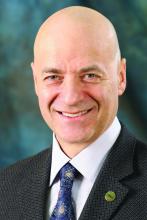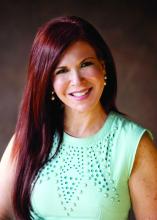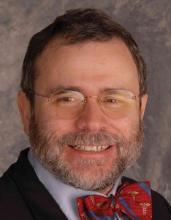Whether a board member for the American Academy of Dermatology and the AAD Association (AAD/A) violated his fiduciary duties by launching an organization that offered board certification to physician assistants (PAs) will soon be decided by AAD members.
In mid-October, AAD President George J. Hruza, MD, said Dr. Dinehart violated his duties when he became sole organizer of the American Board of Dermatology Physician Assistants (ABDPA), an organization that planned to offer board certification to PAs who work with dermatologists, according to a message from Dr. Hruza to members. The use of the words “American Board of Dermatology” in the ABDPA name created confusion to patients and threatened to undermine the value of ABD certification held by AAD/A fellows, Dr. Hruza said.
“Dr. Dinehart’s action to incorporate and organize the for-profit entity ABDPA, LLC., is in direct contradiction to the AAD’s Truth in Advertising and Professional Disclosure policy that states that practitioners should not advertise that they are board certified unless they are certified by an ABMS/AOA [American Board of Medical Specialties or American Osteopathic Association] medical board, such as the American Board of Dermatology,” Dr. Hruza said in an interview with Dermatology News. “This for-profit venture would enable physician assistants to advertise themselves as board certified. The [AAD/A] board in its unanimous decision deemed that the new ABDPA was set up to potentially mislead patients into thinking that physician assistants with this certification would have training and experience equivalent to an ABD-certified dermatologist. This is contrary to the AAD/A’s position on this matter. As such, Dr. Dinehart’s involvement in forming and organizing the ABDPA violated his fiduciary duty to act in the best interests of the AAD/A and to abide by AAD/A policies.”
In a letter to AAD members, Dr. Dinehart called the removal vote a “drastic measure” and said he has done nothing to justify dismissal from the AAD/A board. The ABDPA was intended to improve patient care by establishing certain educational, training, and professional standards for the growing number of physician assistants in dermatology, Dr. Dinehart wrote. That mission was not in conflict with AAD’s values, but rather, the ABDPA would have furthered AAD’s purpose “to promote the highest standards in allied health professionals and services as they relate to dermatology.”
After learning of the board’s concerns, Dr. Dinehart said he discontinued his relationship with the ABDPA and ensured its operations had ended out of respect for the academy. He believes the matter could have been handled much differently.
“I did not violate any bylaws,” Dr. Dinehart said in an interview with Dermatology News. “While I understand that there are certain members of the AAD that personally oppose the growing use of physician assistants in dermatology practices, it is a common practice among many AAD members, and it is not contrary to or detrimental to any of the purposes of the AAD.”
Dr. Dinehart contends he did not run afoul of the AAD/A’s position statement on Truth in Advertising and Professional Credential Disclosure because the statement pertains to AAD/A members and prohibits members from advertising board certifications by nonapproved boards. He emphasized that PAs are not members and said he would never represent or advertise a physician assistant as having a certification equivalent to a board-certified dermatologist or being capable of equivalent credentials.
In addition, he said his involvement with the new organization did not conflict with the AAD’s Practice of Dermatology: Protecting and Preserving Patient Safety and Quality Care position statement, which opposes the independent or unsupervised practice of dermatology procedures by nonphysicians.
“Neither the ADBPA nor the certification it intended to offer would have allowed physician assistants to engage in the independent or unsupervised practice of specific dermatology procedures, and any physician assistant who did so would be subject to the same repercussions that currently exist,” Dr. Dinehart said in the interview.
The ABDPA was formed legally at the end of September and announced its official launch on Oct. 7. The new organization immediately drew criticism from dermatologists and triggered an online petition that denounced the group and called for Dr Dinehart’s removal from the AAD/A board. The petition, started by an anonymous dermatologist, states Dr. Dinehart’s concurrent relationships with the AAD and the ABDPA represent a major conflict of interest. As of Oct. 24, the petition had collected 2,496 signatures.
Monica Madray, MD, a dermatologist based in Georgetown, Tex., who signed the petition, said the ABDPA further muddied the waters in an already confusing world of “providers” and non–dermatology boarded physicians practicing and advertising themselves as dermatologists.
“Patients truly don’t know the difference in training between physicians and midlevels, and by ‘board certifying’ PAs in dermatology, it gets much more confusing,” Dr. Madray said in an interview. “I also think there was a huge financial conflict of interest for Dr. Dinehart to start and run this board as he oversees many midlevels. Frankly, it didn’t pass the sniff test.”
Vivian Bucay, MD, a dermatologist based in San Antonio who signed the petition, said that, if Dr. Dinehart was interested in starting an organization such as the ABDPA, he should have first presented the idea to the AAD/A board and asked for feedback.
“This came [to light] after a press release,” Dr. Bucay said in an interview. “I don’t have an issue with trying to improve and set the bar for what dermatology physician assistants should do. It’s the manner in which it was gone about. In this day and age, we have to disclose any potential conflicts of interest. If we all have to do that as members of the American Society of Dermatologic Surgery or members of the AAD when presenting for continuing medical education, then why would there not be the same standard for a board member to disclose a conflict of interest?”
Dr. Dinehart for his part said the board never gave him an opportunity to respond to its accusations or share his side of the story before initiating the removal vote.
“The board should not have been pressured by a vocal minority of the membership, rushed to judgment, and expedited a special removal vote less than 2 weeks after the board claims it first became aware of the formation of ABDPA,” he said in the interview. “The board should have ... evaluated the alleged conflict and provided me a reasonable opportunity to cure the alleged conflict as provided by the AAD/A’s conflict of interest rules. Had the board allowed me that opportunity, as required, this whole situation could have been resolved.”
Dr. Hruza, however, said the board’s actions came after reviewing evidence with Dr. Dinehart in private, which allowed him to make a statement and provided him a chance to answer questions from the board. He was also afforded several opportunities to resign, which he declined, Dr. Hruza said in the interview.
“I regret that we have been put in this difficult position and that the question must be put to the membership for a painful vote,” Dr. Hruza said. “The academy has a lot of important work to do to advocate for our members and our patients. This issue has been an unfortunate distraction from that important work.”
Daniel M. Siegel, MD, a New York–based dermatologist and former AAD president, said in an interview with Dermatology News that he plans to vote to keep Dr. Dinehart on the board. Dr. Dinehart has been a dedicated advocate for the specialty for more than 30 years and his recent misstep does not rise to the level of board removal, Dr. Siegel said. A social media environment that easily enables people to get fired up about almost any subject and quickly stoke anger in others contributed to overreaction of the situation, he added.
“In retrospect, it was not in the best interests of the AAD, but it was nothing criminal,” Dr. Siegel said in the interview. “He had a business idea, it got a lot negative feedback, and he did the right thing about it. Taking such an aggressive punitive approach for a transgression that was fairly minor is a bad precedent to set.”
Voting on Dr. Dinehart’s position opened on Oct. 21 and will close on Oct. 29. A removal decision requires a two-thirds vote by at least 10% of the voting membership.





